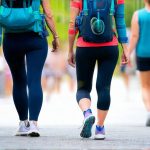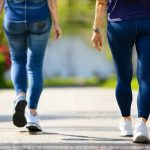Prostate health is often overlooked until issues arise, but proactive care can significantly impact long-term well-being for men of all ages. Many lifestyle factors play a role in maintaining prostate health, with regular physical activity consistently ranking as one of the most beneficial. Walking, specifically, is an accessible and low-impact exercise that offers numerous advantages beyond general fitness. However, simply completing a walk isn’t always enough; integrating post-walk rituals can amplify these benefits, supporting circulation, reducing inflammation, and promoting overall prostate health when combined with a balanced lifestyle and regular medical checkups. This article will explore specific practices you can incorporate after your walks to potentially enhance the positive effects on this vital part of male anatomy.
The focus here isn’t about finding a “cure” – rather, it’s about adopting habits that contribute to preventative care and overall wellness. Prostate health is complex, influenced by genetics, diet, age, and lifestyle choices. While walking provides demonstrable benefits, the post-walk period presents an opportunity to deepen those advantages. Think of it as completing a circuit: the walk initiates positive change, and the post-walk ritual solidifies and enhances that change within your body. We’ll delve into actionable steps you can implement immediately following your walks to maximize their impact on prostate health and overall vitality. Consider incorporating aspects of daily nutrition habits for optimal results.
The Importance of Cool-Down & Hydration
A sudden stop after exercise, even a gentle walk, isn’t ideal for the body. It can lead to blood pooling in the lower extremities, potentially causing dizziness or discomfort. More importantly for our focus, it doesn’t allow your circulatory system to gradually return to its resting state, missing an opportunity to fully reap the benefits of improved circulation that walking provides. A proper cool-down helps regulate heart rate and blood pressure, preventing sudden shifts that can stress the cardiovascular system. This gradual transition is especially beneficial as consistent blood flow supports prostate health by delivering essential nutrients and removing waste products.
Hydration is equally crucial. During exercise, your body loses fluids through sweat, impacting blood volume and potentially hindering recovery. Dehydration can also exacerbate inflammation, which, while a natural part of the healing process, needs to be managed effectively. Replenishing fluids after a walk isn’t just about quenching thirst; it’s about supporting optimal bodily functions that contribute to prostate health. Electrolyte balance is also important – consider incorporating electrolytes into your post-walk hydration if you engage in longer or more strenuous walks. Staying properly hydrated is key, and learning about balancing daily fluids can be very helpful.
A simple cool-down routine could include 5-10 minutes of slower walking, followed by gentle stretching targeting the legs and lower back. For hydration, aim for at least 8-16 ounces of water immediately after your walk, adjusting based on the duration and intensity of exercise. You can also add a squeeze of lemon or a pinch of sea salt to enhance electrolyte replenishment. Remember that consistent hydration throughout the day is paramount, not just post-walk.
Dietary Considerations Post-Walk
What you consume after a walk can significantly impact its benefits—and potentially even support prostate health directly. While general healthy eating habits are essential, focusing on specific nutrients post-exercise can amplify positive outcomes. Foods rich in antioxidants and anti-inflammatory compounds are particularly valuable, as they help combat oxidative stress and inflammation that can contribute to prostate issues over time. Incorporating foods like berries, leafy greens, and fatty fish into your post-walk meal or snack provides these essential components.
Specifically, consider the role of lycopene, a potent antioxidant found in tomatoes, watermelon, and pink grapefruit. Studies suggest a link between lycopene intake and reduced risk of prostate cancer, although more research is ongoing. While not a replacement for medical advice, incorporating lycopene-rich foods into your diet can be a supportive strategy. Similarly, foods containing selenium, such as Brazil nuts and tuna, have shown potential benefits in prostate health due to their antioxidant properties. To further support this, explore the best vegetables for prostate and kidney health.
Avoid highly processed foods, sugary drinks, and excessive amounts of red meat immediately after walking. These choices can contribute to inflammation and negate some of the positive effects of exercise. Instead, opt for a balanced snack or meal that combines protein (for muscle recovery), carbohydrates (to replenish glycogen stores), and healthy fats (for sustained energy). A small handful of almonds with a piece of fruit, or a salmon salad on whole-grain bread are excellent examples.
Pelvic Floor Exercises & Mindfulness
The pelvic floor muscles play a crucial role in supporting the bladder, bowel, and – importantly for this discussion – the prostate gland. Weakened pelvic floor muscles can contribute to urinary incontinence and other issues related to prostate health. Post-walk is an ideal time to incorporate Kegel exercises, which strengthen these muscles without requiring any special equipment or location.
To perform Kegels:
1. Identify the muscles you use to stop urination midstream.
2. Contract those muscles for 3-5 seconds, then relax for 3-5 seconds.
3. Repeat this exercise 10-15 times.
4. Perform this routine 2-3 times daily.
Consistency is key with Kegels – regular practice over time will yield the most noticeable results. It’s important to avoid contracting other muscle groups (like your abdomen or glutes) while performing these exercises. If you’re unsure about proper technique, consult a physical therapist specializing in pelvic floor health. You might also find posture correction techniques helpful in supporting overall pelvic health.
Mindfulness and deep breathing exercises are also beneficial post-walk. Stress can contribute to inflammation and negatively impact overall health, including prostate function. Taking a few minutes after your walk to practice mindful breathing helps calm the nervous system, reduce stress hormones, and promote relaxation. Focus on slow, diaphragmatic breaths, inhaling deeply through your nose and exhaling slowly through your mouth. This simple practice can have profound effects on both physical and mental well-being.
Gentle Stretching & Mobility Work
Beyond cool-down stretching, incorporating gentle mobility work post-walk can further enhance circulation and flexibility in the lower body—areas directly linked to prostate health. Tight hip flexors, for example, can contribute to poor posture and reduced blood flow to the pelvic region. Simple stretches targeting the hips, glutes, and hamstrings can help alleviate this tension.
Consider incorporating these stretches into your routine:
– Hip Flexor Stretch: Gently lean forward while kneeling with one leg extended in front of you, feeling a stretch in the front of your hip.
– Glute Bridge: Lie on your back with knees bent and feet flat on the floor, then lift your hips off the ground, squeezing your glutes at the top of the movement.
– Hamstring Stretch: Sit with legs extended and reach towards your toes, keeping your back straight as much as possible.
These stretches should be performed gently and without forcing anything. Hold each stretch for 20-30 seconds, breathing deeply throughout. The goal is to increase range of motion and improve circulation, not to achieve a perfect stretch. Remember that consistency is more important than intensity when it comes to stretching. To support this further, consider learning about daily walk adjustments for prostate relief.
Self-Massage & Circulation Boosters
Gentle self-massage techniques can further promote blood flow to the pelvic region and help relieve tension in surrounding muscles. While professional massage therapy can be highly beneficial, simple self-massage routines can be incorporated into your post-walk ritual with ease. Focus on areas like the lower back, hips, and thighs. Using a foam roller or tennis ball can also assist with targeted pressure release.
Specifically, gentle circular motions around the sacrum (the triangular bone at the base of your spine) can help stimulate blood flow to the pelvic area. Avoid direct pressure on the prostate gland itself; instead, focus on surrounding muscles. Combining self-massage with aromatherapy using essential oils known for their anti-inflammatory properties (like lavender or chamomile) may enhance relaxation and promote well-being.
Finally, consider incorporating circulation boosters like compression socks after your walk. These can help prevent blood pooling in the legs and improve venous return, supporting overall cardiovascular health. Remember that these post-walk rituals are complementary to a healthy lifestyle and regular medical checkups—they are not substitutes for professional healthcare advice or treatment. For a more holistic approach, explore simple routines for long-term prostate support.





















